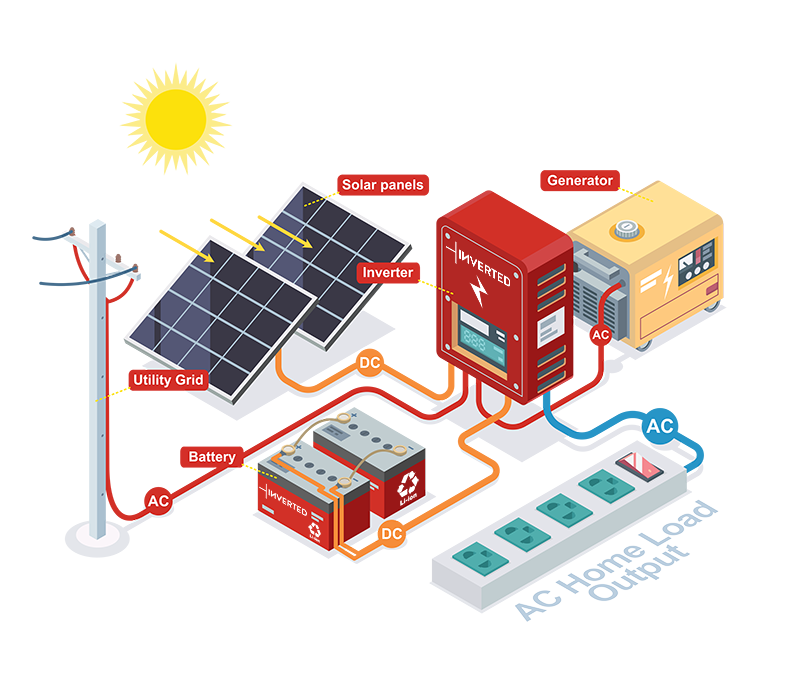
How much solar energy is produced by India?
India’s solar power capacity stood at 30 GW as of July, 2019. With recent projects such as the “Rewa Solar Power Project”, India will definitely be able to maintain its position as one of the top ten solar energy producers in the world.
Karnataka produces the largest amount of solar energy among various states in India. Karnataka’s solar energy capacity was 6095.56 MW as of 31st March, 2019.
Why will batteries work with solar?
Batteries are an important component in the solar energy ecosystem as they have the potential to store solar energy. When sunlight is not available at night, the stored solar energy can be used to power our homes and offices.
Let us start with the example of using solar energy for street lighting. A solar panel is generally fixed on top of the pole which supports the street lamp. During the day, the solar panel generates electricity when sunlight shines on it. The generated electricity is stored inside a battery which is located inside the lighting pole. The battery uses this stored energy to light the lamp at night.
Companies that are working in the field of solar energy also work with inverters. Inverter’s are the devices that help us convert the DC power generated by solar panels to AC power. Once DC power is converted to AC, it can be used to power appliances in our homes (eg: Geysers, phones, lights etc.) Indian solar companies are now moving towards making inverters with in-built Lithium-ion batteries. These inverters can be made in such a way that they are compact and can even be mounted on a wall.
Why is Lithium-ion a good option?
Lithium-ion batteries outshine other batteries in more than just a few ways. Let us take a look at some of the advantages of Lithium-ion batteries.
People are currently using Lead-acid batteries in their home inverters in India. Lead-acid batteries are often replaced around 2-3 times in a span of ten years whereas Lithium-ion batteries come with a performance warranty of at least 7 years. So lithium-ion batteries score pretty high when it comes to longevity. Not only is your battery going to last much longer, it will also recharge much faster. Lithium-ion batteries can be charged in about 2 hours whereas a lead-acid battery will take around six hours.
People often worry about maintenance and safety when it comes to installing components such as inverters. Now Lithium-ion batteries come with a protection circuit installed in them. Basically, the protection circuit is like the bodyguard of the battery. The bodyguard protects not just the battery but also the user. It will regulate the temperature inside the battery and make sure it gets charged in a safe way.
When we think in terms of cost, the upfront cost of a lithium-ion battery is much higher. But Lithium-ion batteries easily function well for over 7 years and are more efficient in terms of total cost of ownership. Above all, Lithium-ion batteries do not contain toxic elements like the lead-acid battery and can be recycled in an efficient manner.


Leave A Comment